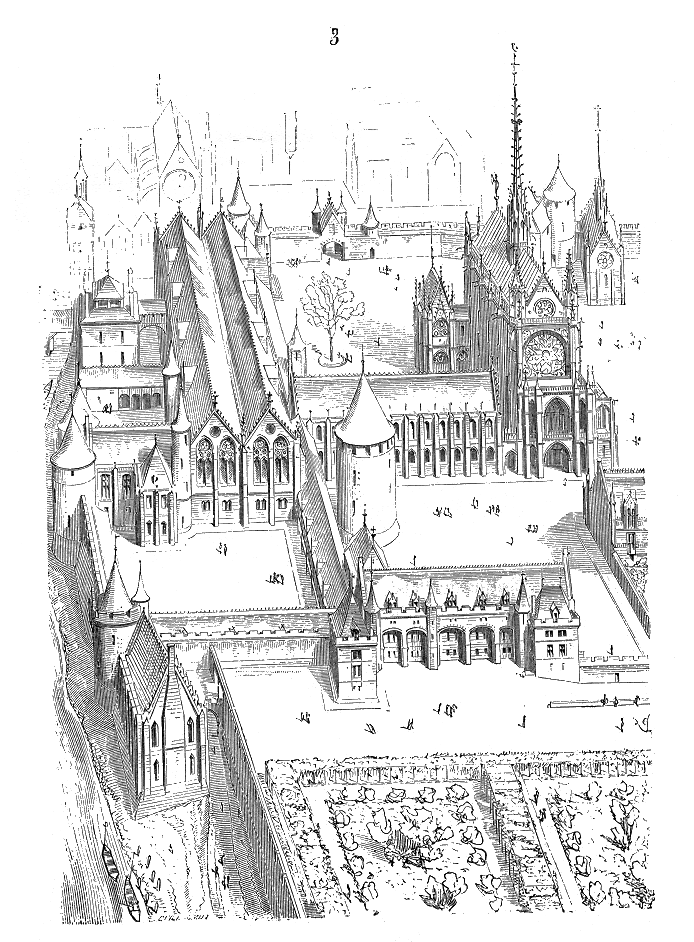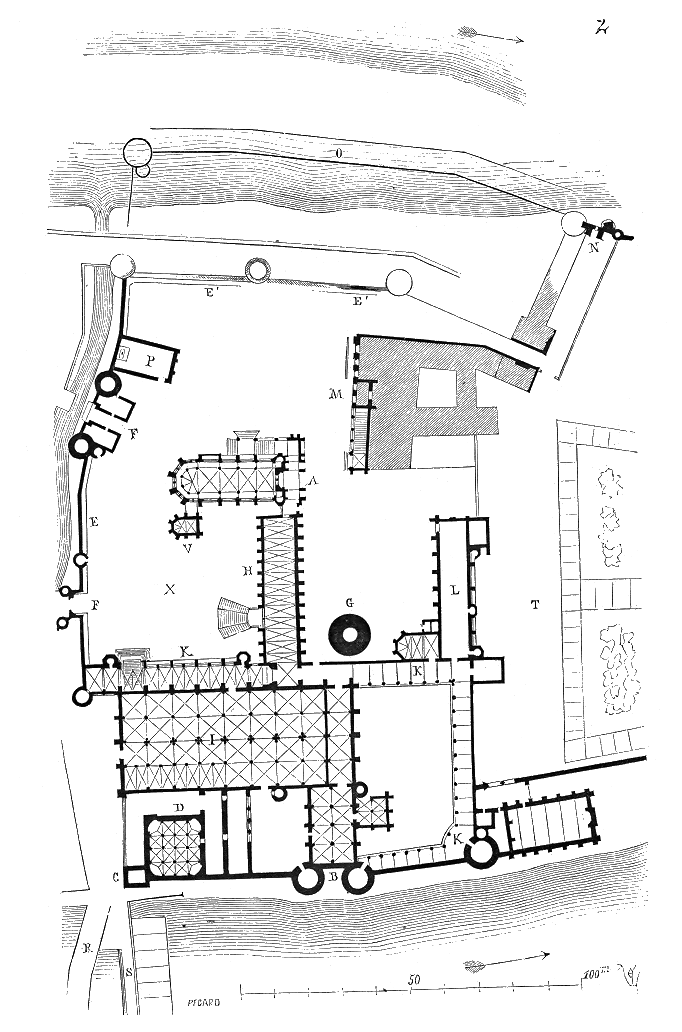Difference between revisions of "Palais de la Cité"
| Line 20: | Line 20: | ||
<br> | <br> | ||
<br> | <br> | ||
| − | [[]] | + | [[File:Palais.des.rois.Paris.2.png]] |
Latest revision as of 00:52, 12 November 2018
The Palais de la Cité, located on the Île de la Cité in the Seine River in the center of Paris, was the residence of the Kings of France from the sixth century until the 14th century. From the 14th century until the French Revolution, it was the headquarters of the French treasury, judicial system and the Parlement of Paris, an assembly of nobles. During the Revolution it served as a courthouse and prison, where Marie Antoinette and other prisoners were held and tried by the Revolutionary Tribunal. The palace was built and rebuilt over the course of six centuries; the site is now largely occupied by the buildings of the 19th century Palais de Justice, but a few important vestiges remain; the medieval lower hall of the Conciergerie, four towers along the Seine, and, most important, Sainte-Chapelle, the former chapel of the Palace, masterpiece of Gothic architecture. Both parts of the Conciergerie and Saint-Chapelle are classified as national historical monuments and can be visited, though most of the Palais de Justice is closed to the public.
The Roman and Merovingian Palace
Archeological excavations have found traces of human habitation on the [Île de la Cité from 5000 BC until the beginning of the Iron Age, but no evidence that the Celtic inhabitants, the Parisii, used the island as their capital. However, after the Romans conquered the Parisii in the first century BC. the island was developed quickly. While the forum and largest part of the Roman town, called Lutetia, was on the left bank, a large temple was located on the east end of the island, where the Cathedral of Notre Dame de Paris is found today. The west end of the island was residential, and was the site of the palace of the Roman prefects, or governors. The palace was a Gallo-Roman fortress surrounded by ramparts. In the year 360 AD, the Roman prefect Julian the Apostate was declared Emperor of Rome by his soldiers while he was resident in the city.
Beginning in the 6th century, the Merovingian kings used the palace as their residence when they were in Paris. Clovis, the King of the Franks, lived in the palace from 508 until his death in 511. The Kings who followed him, the Carolingians, moved their capital to the eastern part of their empire, and paid little attention to Paris. At the end of the 9th century, after a series of invasions by the Vikings threatened the city, King Charles the Bald had the walls rebuilt and strengthened. Hugh Capet (941-996), the Count of Paris, was elected King of the French on 3 July 987, and resided in the fortress when he was in Paris, but he and the other Capetian kings spent little time in the city, and had other royal residences in Vincennes, Compiègne and Orleans. The administration and archives of the kingdom travelled wherever the king went.
At the beginning of the Capetian dynasty, the King of France ruled little more than what is now the Île de France; but through a policy of conquest and intermarriage, they began to expand their kingdom, and to transform the old Gallo-Roman fortress into a real palace. Robert the Pious, the son of Hugh Capet, who ruled from 972 to 1031, stayed in Paris more often than his predecessors. He rebuilt the fortress in particular to meet the demands of his third wife, Constance of Arles, for greater comfort. Robert reinforced the old walls and added fortified gates; the main entrance, most likely, was on the north side. The walls surrounded a rectangle 130 meters long and 110 meters wide. Within the walls Robert had constructed the Salle de Roi, the meeting room for the Curia Regis, the assembly of nobles and for the royal council. To the west of this building he built his own residence, the chambre de Roi. Finally, he built a chapel dedicated to Saint Nicholas.
Further additions were made by Louis VI, with the help of his friend and ally, Suger, the Abbot of the Basilica of Saint-Denis. Louis VI finished the chapel of Saint Nicholas, demolished the old tower or donjon in the center, and built a massive new donjon, or tower, the Grosse Tour, 11.7 meters wide at the base, with walls three meters thick. This tower existed until 1776.
His son, Louis VII (1120-1180) enlarged the royal residence and added an oratory; the lower floor of the oratory later became the chapel of the present Conciergerie. The entrance to the palace at this time was on the eastern side, on the Cour du Mai, where a grand ceremonial stairway was constructed. The western point of the island was transformed into a walled garden and orchard.

